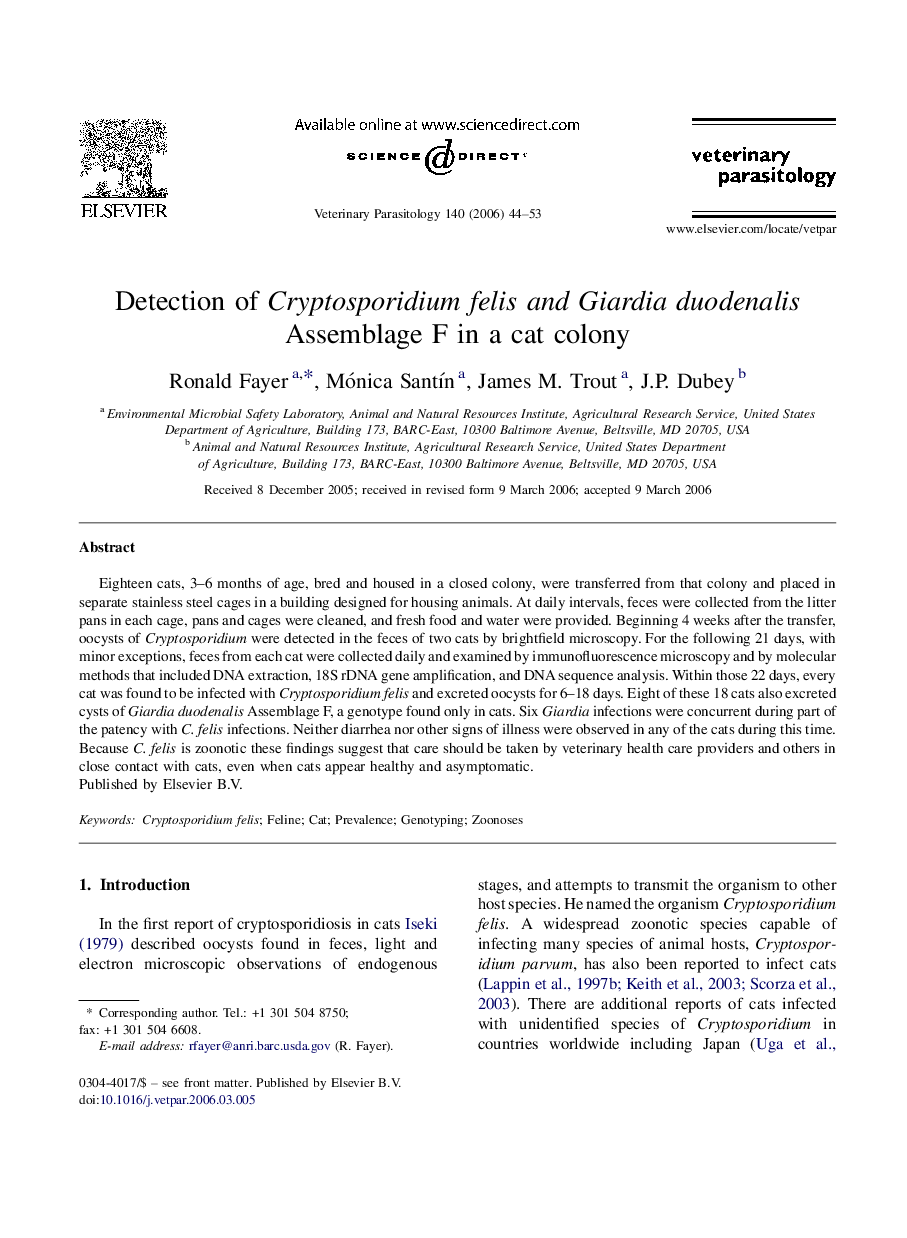| Article ID | Journal | Published Year | Pages | File Type |
|---|---|---|---|---|
| 2472443 | Veterinary Parasitology | 2006 | 10 Pages |
Eighteen cats, 3–6 months of age, bred and housed in a closed colony, were transferred from that colony and placed in separate stainless steel cages in a building designed for housing animals. At daily intervals, feces were collected from the litter pans in each cage, pans and cages were cleaned, and fresh food and water were provided. Beginning 4 weeks after the transfer, oocysts of Cryptosporidium were detected in the feces of two cats by brightfield microscopy. For the following 21 days, with minor exceptions, feces from each cat were collected daily and examined by immunofluorescence microscopy and by molecular methods that included DNA extraction, 18S rDNA gene amplification, and DNA sequence analysis. Within those 22 days, every cat was found to be infected with Cryptosporidium felis and excreted oocysts for 6–18 days. Eight of these 18 cats also excreted cysts of Giardia duodenalis Assemblage F, a genotype found only in cats. Six Giardia infections were concurrent during part of the patency with C. felis infections. Neither diarrhea nor other signs of illness were observed in any of the cats during this time. Because C. felis is zoonotic these findings suggest that care should be taken by veterinary health care providers and others in close contact with cats, even when cats appear healthy and asymptomatic.
